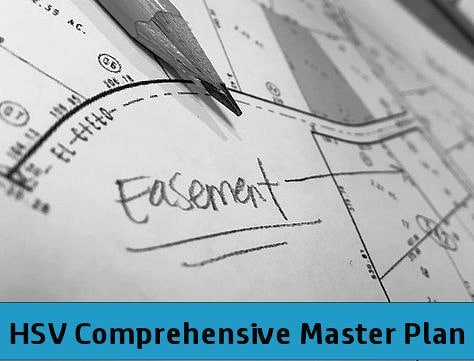By Andy Kramek, December 21, 2019
I was very interested to read the report on the recent CMPAC meeting particularly about its focus on the “tools” included in the CMP. So I wanted to see just what these tools do and found it very interesting indeed. I thoroughly recommend that you dig them out and go through them in detail because, when you do, you will see how heavily this whole monstrosity is skewed to some very specific objectives. For example, the “Growth Prioritization Tool” defines priorities in terms of points as follows:

It also identifies four criteria to use when assessing a potential “growth project”. Namely, Location, Market Gap, Quality of Life and Profit & Cost. These seem pretty reasonable on the face of it, at least, until you realize that Quality of Life comprises less than 30% of the criteria and that integration into the existing environment contributes less than 15%! So what would constitute a Very High Priority project using these scores? Well, let’s see:*
CMP-Chart-2-AK-1Quite apart from anything else many of these criteria expose my total ignorance – I have no idea what “Development transitions scale toward existing housing” means, or “Over 50% of units create off-site preserve lots (Purchase or TDR)” or even what an “Activity Center” really is. Clearly the latter two are terribly important since they alone comprise 33% of the maximum possible score. Actually, if you examine the criteria carefully you can, using this tool, generate a “High Priority” project by getting a third-party developer to fund building a high-density mix of cottages and row houses within ¼ mile of an activity center with over 50% of the units creating off-site preserve lots and ignore everything else (including any mention of revenue generation for the POA)!
While on the topic of revenue generation, let’s look at that last high-scoring line item in a little more detail. The definition is “Project will provide over $10,000 assessment per acre, per year“. What does that actually mean in terms of “units”. Assuming that assessment fees for these new units are running at or around current rates, each unit will generate about $850 per annum. Therefore we would, at current values, need 12 units per acre to generate the required revenue. That means each unit can occupy no more than 3,630 sq ft in total or just over a square measuring 60 ft on a side. For comparison, a typical ¼ acre lot is around 11,000 sq ft or, to put it another way, build 3 units on the same piece of land that your house currently occupies!
The “Amenities” Tool operates on a similar set of principles, but it has many more criteria defined which makes it difficult to determine what is actually considered “important”. However, some of the higher scoring criteria are:
CMP-Chart-3-AKNote that, at first glance, some of these are apparently mutually exclusive. However, that is because these are simply the highest-ranked criteria from each section; for example “Quality of Life” actually has 15 separate criteria of which only 5 are extracted. To generate a high priority project using the full list of criteria requires a score of at least 106 (96 for upgrading an existing amenity) so just cherry-picking the high scoring items, as I have done here, does not even get close. The obvious conclusion is that it is going to be much more difficult to define an amenity as a high priority item than simply building lots of new housing units!
However, having said all this, the third “tool” is, perhaps, the most interesting. This is the “Quantifying Value” Tool and is supposed to be customized specifically to Hot Springs Village. The instructions included indicate that the criteria be prioritized according to the needs of the village, and then weighted as to their relative importance. Here are the criteria as they stand:
CMP-Chart-4-AKApart from the extensive use of gobbledygook terms and meaningless acronyms (what exactly does “recreate individually” mean and just how do you “utilize amenities in multiple formats”?), this is clearly intended to be used as a starting point, not an end in itself. However, I have not seen any indication in any of the meetings, nor did I hear it stated in this last meeting, that anything had been done to tackle the job of completing this tool. Most of the discussion seemed to center on the Growth Prioritization Tool with, an almost aside, mention of the Amenity Tool but nothing was said about the one tool that is supposed to be specifically customized to the needs of the Village.
So what exactly is this CMP Advisory Committee doing? Surely setting, and prioritizing, the criteria for determining what the Village needs would be an important issue. In fact, it may be the single most important issue since, without those criteria how do you know that what you are doing makes sense?
By Andy Kramek, December 21, 2019
*(Please click the Full-screen arrows on the pdfs to enlarge the charts.)












Gary Puffer
12/21/2019 — 1:34 pm
That was very well stated and ILLUMINATING, Andy.
Tom Blakeman
12/21/2019 — 2:00 pm
The “tools” will be a self serving mechanism to validate whatever some group wants it to. Example:
Someone (POA) wants to build an low rent apartment building. They just pick and choose all the “quantifying values” which they subjectively construe to be applicable until they achieve a winning score of points. Bingo! It is now deemed a viable project because the “tools” validated it to be so.
Smoke and Mirrors.
Robert Busse
12/21/2019 — 2:22 pm
Tom, I guess that is how our CEO and Recreation Head, early on, came up with the determination that the new outdoor pool being built was a Very High Priority project according to the CMP tools.
David V
12/21/2019 — 8:40 pm
Tom Wise ,former Board Member and President, management skills and expertise was instrumental in completing the outdoor pool project. The CEO, Recreation Head and village would not have a pool today without Tom. I would recommend that the Pool be named in his honor.
Anonymous
12/21/2019 — 9:57 pm
Yeah? In Tom Weiss’s honor? That’s dirty pool. Don’t need bathrooms.
Al
12/22/2019 — 5:35 pm
TW was instrumental in a lot of things. Contrary to what he believes, his reputation is his character. There is a whole lot that could be named after this ex-xxx.
Anonymous
12/22/2019 — 8:42 pm
Without T Weiss we would still have our historic Fay Jones Olympic Pool and Bathhouse Complex. Weiss neglected the Historic tool, he has no quality of life.
Anonymous
12/23/2019 — 11:40 pm
Then let’s name the new pool the “Cess Pool” in honor of Tom Weiss, our CEO, and BOD.
Anonymous
12/25/2019 — 6:52 pm
At least he paid cash for the Cess Pool, oops, wait a moment, borrowed money to buy sanitation trucks, borrowed money to keep our drinking water drinkable, and sewage out of the river. Robbing Peter to Pay Caruthers without any other bids.
Kilroy
12/23/2019 — 1:10 pm
Tom B. That is why it is living and breathing document. (CMP) Make it say anything in the future to fit the narrative. Same as our bylaws. Our Charters. It is all a piece of clay in the hands of the “ceo”. She is a BS artist molding the vassals. The fiefdom shall be omnipotent.
Bob
12/21/2019 — 2:14 pm
I would venture to guess that an extremely high percentage of Villagers do not understand nor could they tell someone how to use and apply these TOOLS to something. What good are they if they can not be understood and used by the average person?
Andy Kramek
12/22/2019 — 8:40 am
Even more to the point, what good are they if the one tool that is supposed to be specific to the needs of the Village is not even being used!
Kilroy
12/21/2019 — 8:13 pm
Some people are just fascinated by things that sound intellectually appealing. Not understanding what the hell the double speak means maters not.
We illiterates just say baffle them with BS. We bought it. We paid big money for this Voodoo work. Those Arkansas hillbillies will eat it up. SMH
Andy Kramek
12/22/2019 — 8:47 am
Much of this feels like it was created using a buzz-word generator. Pick any three digit number and choose the corresponding words from the list below:
For example:
111 = Total Organizational Flexibility
362 = Parallel Transitional Capability
509 = Responsive Management Contingency
750 = Responsible Logistical Options
Enjoy:
0. integrated 0. management 0. options
1. total 1. organizational 1. flexibility
2. systematized 2. monitored 2. capability
3. parallel 3. reciprocal 3. mobility
4. functional 4. digital 4. programming
5. responsive 5. logistical 5. concept
6. optimal 6. transitional 6. time-phase
7. synchronized 7. incremental 7. projection
8. compatible 8. third-generation 8. hardware
9. balanced 9. policy 9. contingency
Anonymous
12/22/2019 — 2:29 pm
CMP: $500,000. Buzz Word Generator: Priceless!
Anonymous
12/22/2019 — 8:45 pm
Plus 15 million to implement it with ZERO results!
Julie
12/22/2019 — 5:08 am
These metrics actually pave the way for mobile homes in HSV. Don’t doubt me on this. They are coming.
You would certainly get them in 3000 sq ft lot.
You could put them near anything you want, such as one of our own vibrant town centers.
And they could cluster around a recreation center, no problem.
These pre-manufactured, high quality living units certainly fit the high density requirement. Bonus points!!
And more points for their low cost!!
They can be clustered in a revolutionary, spoke-like pattern simply by adjusting the cinder blocks in a radial configuration, thus allowing for and encouraging true community at-oneness with the overriding CMP concerns of livability, affordability, positioning, integration, place keeping, absorption, facilitation, quantification, historic preservation, green build-ability, brownfield development, walkability, human scaled public realm-keeping, ecomobility, and revenue generation.
Perhaps our senior director of waypointing could work up some renderings of one of these pocket mobile home parks. Coronado Center the obvious choice. It is currently, according to the folks at the POA, severely underused. And, our vibrant town center is nearby for shopping, casual dining out, socializing over a great cup of coffee, firearm training nearby, gym, highly regarded indoor pool with top-notch heating and cooling system, wonderful low-cost library chock full of excellent reading material, fine dining, and more! Who would not want to live in such a dream place? And all for only about 20,000 dollars give or take single vs. double wide. And with POA incentives this figure could be further reduced so as to maintain an index of affordability that meshes appropriately with the goals and aspirations of the CMP regarding the implementation of the said, aforementioned high density, green living community regional plan.
The CMPAC knows what they are doing. That is evident from the transcript of their last meeting. Trust them. I do.
And they fully understand the intricacies of the CMP and the sometimes confusing verbiage, which in no way was green lighted for inclusion so as to foster any unwarranted or inappropriate sense of confusion or misunderstanding. These terms are simply the most accurate and meaningful for describing the intricacies of such a far-reaching, all-inclusive, comprehensive, omniscient, multifaceted and multicultural roadmap to success.
We need to keep this excellent plan moving forward as rapidly as is humanly possible while still maintaining the integral safeguards the CMP has carefully outlined for consideration and implementation.
Strike while the irons are hot. People are gathering at the “gates” for just a chance to “live their dreams.” Let’s give it to them. Now. Please.
Tom Blakeman
12/22/2019 — 7:30 am
Julie, can we get you to run for a seat on the board?
Andy Kramek
12/22/2019 — 8:38 am
LOL: Wonderful, Julie. You have clearly grasped the essence of the CMP (unlike so many who mindlessly oppose it) and are embracing it with open arms. I agree with Tom, would you consider running for the BoD?
Moe
12/22/2019 — 8:43 am
This response by Julie is so good it should be a stand alone article on this site. If you read the CMP the only way it can work is to allow high density low cost housing…and how do you do that without considering mobile homes?
Saul A.
12/22/2019 — 6:55 pm
Thank you, Andy, I love your analysis of the article and your buzz word comment. Colorful language and buzz words can deceive, it is all part of marketing the CEO’s CMP to property owners. An assessment increase push is coming.
Karen Bump
12/22/2019 — 7:54 pm
Throw out the CMP and govern the future with common sense, not I’ll-conceived ideas.
Mark
12/23/2019 — 4:47 am
That’s not going to happen.
Anonymous
12/23/2019 — 8:15 am
When I was working this new person recently hired approached me asking if I would sign her document for Total Organizational Flexibility so the company would attain Paralleled Transitional Capability and in my Responsive Management Contingency reply, that to have Responsible Logistical Options, she was just have to rely on my “word”.
Andy Kramek
12/23/2019 — 9:04 am
Nice! But I fear you forgot to employ 911 ( Balanced Organizational Flexibility ) in your reply…
Kilroy
12/23/2019 — 8:32 am
How do you keep pseudo intellectuals busy?
Give them a buzz word generator for Christmas. That should be sustainable.
Anonymous
12/23/2019 — 8:35 am
Julie and Andy should team up.
Moe
12/24/2019 — 7:34 am
We have arrived at FULL ORWELL here in HSV.
Anonymous
12/26/2019 — 8:50 am
Does Andy own property in HSV?
What is his vested interest in HSV?
Maybe he should run for the Board.
Andy Kramek
12/26/2019 — 9:05 am
Andy used to live in HSV until July of 2019, but still owns property in the Village. British by origin, Royal Navy Veteran, naturalized US Citizen since 2011. Now resident in Tucson.
Anonymous
12/26/2019 — 9:11 am
The one that moved away?
Andy Kramek
12/26/2019 — 10:32 am
Yes. We moved on the advice of our Doctors, for reasons to do with our health – not that it is any of your business of course! But then, I have nothing to hide and am happy to have my name associated with my posts. Not sure what it says about you that you won’t do us the same courtesy.
Kirk Denger
12/26/2019 — 8:41 pm
We all wish you the best Andy, thanks for continuing to keep in touch through the media. You are one of our most revered members.
Andy Kramek
12/29/2019 — 3:05 pm
Thank you Kirk.
Aristotle Onasis once said:
“It is during our darkest moments that we must focus to see the light”
Hopefully we can get some sense back into the management of the Village in 2020